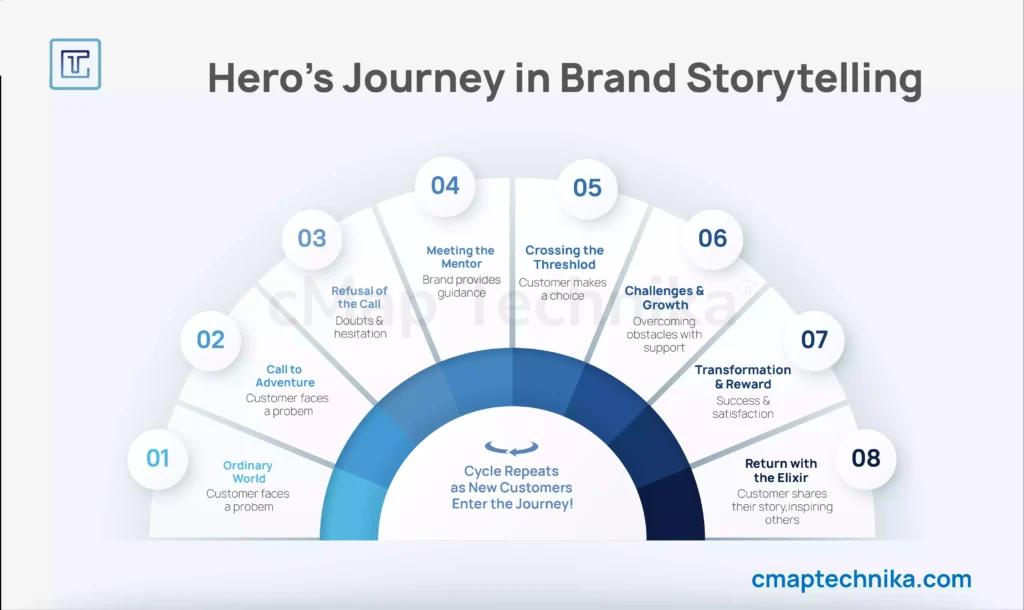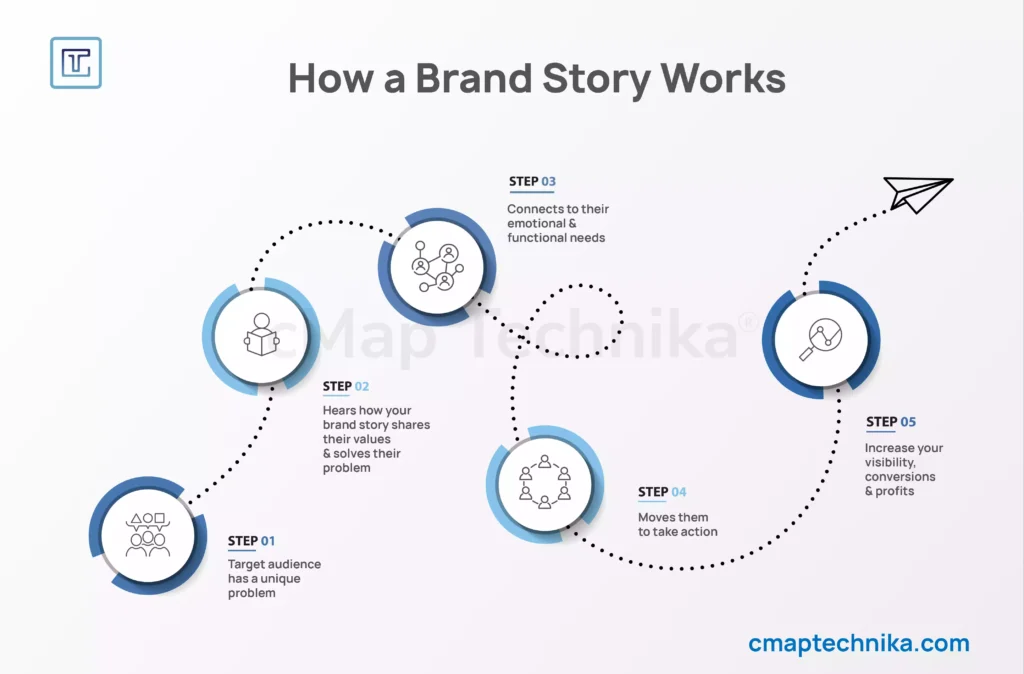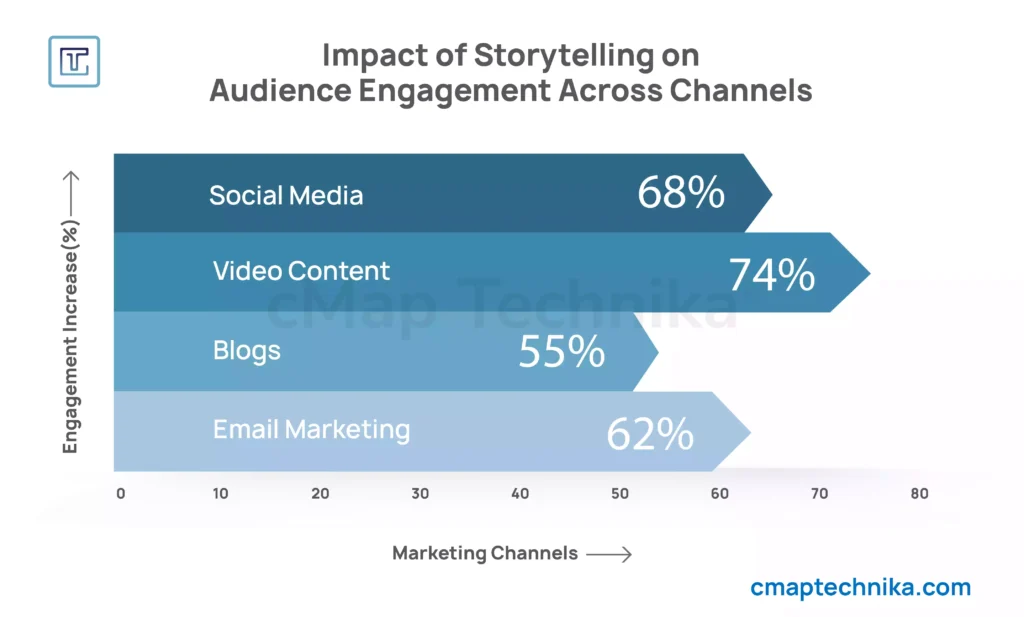In today’s competitive market, businesses are constantly looking for ways to stand out. While many focus on product features, pricing strategies, or technical advantages, there’s one element that consistently captures consumer attention: storytelling. The art of storytelling has emerged as a powerful tool in brand communication, enabling companies to forge deeper connections with their audience, build brand recognition, and foster loyalty.
At Waltcorp, we understand the power of narrative in shaping perceptions and driving business success. Let’s explore how storytelling can become a cornerstone of brand communication and why it is essential for businesses aiming to thrive in the digital age.
Why Storytelling Matters in Branding

Storytelling has been a part of human culture for centuries, but its relevance in brand communication has skyrocketed in recent years. People are naturally drawn to stories—they’re memorable, emotionally engaging, and create a sense of connection. In the context of branding, a compelling story helps customers relate to a company on a personal level, transforming a simple transaction into a lasting relationship.
When a brand weaves its narrative, it allows customers to see beyond the logo or product. They begin to understand the mission, values, and purpose that drive the business. This deeper connection is what turns casual buyers into loyal advocates.
Building Emotional Connections
One of the most powerful aspects of storytelling is its ability to evoke emotions. People remember how a brand made them feel far more than they remember the specific details of a product. By creating an emotional connection, businesses can differentiate themselves in a crowded marketplace.
A great brand story taps into the values and aspirations of its target audience. Whether it’s a story of overcoming adversity, a commitment to sustainability, or the pursuit of innovation, these narratives resonate on a personal level. For example, brands like Nike and Patagonia have built their empires not just by selling products but by telling stories of perseverance, environmental consciousness, and social impact.
Crafting a Compelling Brand Narrative

The foundation of effective brand storytelling lies in creating a clear, consistent narrative. This narrative should focus on the company’s mission, values, and vision, and it should be communicated across all channels. However, not every brand story is the same. Successful brands understand their audience deeply and shape their stories accordingly.
- The Hero’s Journey: This is a classic storytelling framework where the brand positions itself (or its customer) as the hero on a journey. The story typically involves challenges, growth, and a resolution that aligns with the brand’s core message. For instance, Apple’s narrative often revolves around empowering individuals to push boundaries through technology.
- Authenticity and Transparency: Today’s consumers crave authenticity. Brands that are honest about their challenges, mistakes, and growth are often more relatable than those that present an idealized image. Authentic stories about how a company’s products or services evolved in response to customer needs or social issues help establish credibility.
- Customer-Centric Stories: In addition to showcasing the brand’s journey, focusing on customer experiences can be incredibly powerful. Customer testimonials, success stories, and user-generated content create a sense of community and make the brand feel more accessible. When customers see others like themselves benefiting from a product or service, it builds trust and increases the likelihood of conversion.
Storytelling Across Channels
With the rise of digital communication, brand storytelling isn’t confined to traditional advertising or print materials. It now spans multiple touchpoints, from social media to websites, blogs, podcasts, and even video content. Brands must ensure that their story is consistently told across all channels, while adapting the delivery to suit each medium.
- Social Media: Platforms like Instagram, Twitter, and TikTok have become storytelling powerhouses, where brands can engage in real-time conversations, share behind-the-scenes glimpses, or create viral content that resonates with their audience.
- Video Content: Video is an ideal format for storytelling, as it combines visuals, sound, and narrative to create an immersive experience. Whether it’s a brand documentary, a YouTube series, or a short ad, video storytelling helps brands convey complex messages in an engaging and easy-to-digest way.
- Website & Blogs: The brand’s website is its digital home, and it should tell the brand’s story clearly from the moment a visitor lands on it. Blogs allow brands to go deeper, offering thought leadership, customer stories, and insights that align with the brand’s message.
- Email Marketing: Email newsletters provide the perfect platform for delivering ongoing brand narratives to loyal customers, with personalized stories or updates that keep audiences engaged and informed.
The Role of Consistency
While the medium may vary, consistency is key to successful brand storytelling. Each piece of content, whether a social media post or a brand video, must align with the brand’s overarching narrative. Consistent messaging helps reinforce the brand’s identity and keeps it top-of-mind for consumers.
Brand consistency also extends to visual elements, tone, and voice. A consistent style guide ensures that whether a customer is reading an email, watching a video, or browsing the website, they receive a cohesive brand experience.
Measuring the Impact of Storytelling

In the world of digital marketing, it’s essential to measure the effectiveness of brand storytelling. Tracking metrics such as engagement rates, click-through rates, customer retention, and brand sentiment provides valuable insights into how well the story is resonating with the target audience. These metrics allow brands to adjust their narratives and ensure that they continue to build lasting connections.
Storytelling is not just about telling a good story—it’s about telling a story that drives action, whether that’s making a purchase, signing up for a newsletter, or sharing the story with others.
Conclusion
In a world where customers are bombarded with marketing messages daily, storytelling stands out as a powerful and effective way to connect with audiences. When done right, storytelling elevates a brand, turning it into something customers can relate to, believe in, and support. By weaving compelling narratives, brands can not only engage customers but also drive loyalty and recognition.
At Waltcorp, we help businesses craft stories that resonate and deliver results. By embracing the art of storytelling, companies can create deeper, more meaningful connections with their audiences, ensuring long-term success in an increasingly competitive market.






